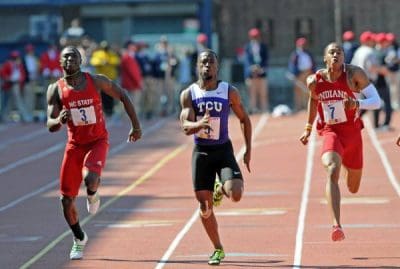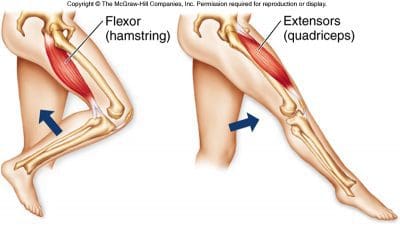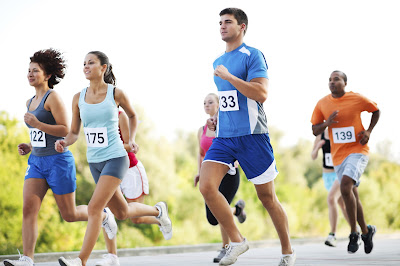Muscle strains are a common injury among athletes, together with the hamstrings being susceptible to injury in sports which involve high speed running. As an example, musculotendon strains accounted for almost half of accidents in the National Football League team throughout pre-season practice, with hamstring strains being the most common and requiring the most time (average of 8.3 days) apart from game.
From the Australian Football League, hamstring strains are the most frequent injury with approximately six accidents per club a year, and 33 percent of those being recurrent injuries. The susceptibility of the hamstrings to harm during high speed running is linked to the biomechanical demands put on the muscle, although debate continues regarding whether injury occurs through the stance or swing phase of a gait cycle.
This problem is applicable for designing the type of resistance training which may be effective for preventing recurrent or first hamstring injuries, among others. Specifically, injury prevention programs would ideally incorporate aspects (e.g. lower extremity positions, muscle lengths, contraction type) that are most similar to the conditions related to injury, such that the athlete could maximize the gains in functional strength and minimize the risk of future damage or injury.
Hamstring Injury Research Studies
Animal models have been used to establish relationships between injury threat and musculotendon mechanisms. The degree of muscle trauma includes negative work done by the muscle and the size of fiber strain when stretching a maximally activated muscle. However, when cycles are imposed to a musculotendon unit, the degree of strain can vary which makes the muscle potentially more prone after loading cycles.
These insights are relevant for understanding hamstring injury mechanics. In particular, the biarticular hamstrings are proven to experience a contraction with the quantity of negative work with running speed. Thus, the hamstrings may be vulnerable to some late swing injury because of repetitive strides of high speed. But, other researchers have argued that the hamstrings are more likely to be injured during the stance phase of gait when the limb is subjected to external loading through contact. In addition, a recent study suggests that the hamstrings may also experience a lengthening stage during late stance. But there have been no prior studies that have used data to examine kinetics, and limited attempts during sprinting to quantify ground responses.

Other research study results suggest that the hamstrings are considerably loaded during both the stance and swing phases of top speed treadmill running. But, it was also discovered that because the hamstrings undergo a lengthening contraction during swing stage, negative muscle function is restricted to this stage. This result resembles a range of prior kinematic studies, however, contrasts with others, who reported that the athletes experience another lengthening period during the late stance phase of overground running.


Conceptually, hamstring lengths are primarily a function of knee and hip flexion angles. For example, the hamstrings are lengthening during swing once the hip is bending as these motions both contribute to hamstring stretch and the knee is slowly stretching. However, the hip continues to expand throughout stance and starts to extend prior to foot contact; the knee then extends until toe-off and flexes until mid-stance. Therefore, if stretch is to happen during the second half of stance, the hamstring would have to exceed the hamstring shortening because of hip extension. The knee extension speed would have to transcend the hip extension velocity, further because the hamstring muscles at the hip are larger than in the knee. But, knee angular velocities and sagittal hip during posture are argued to be of comparable size, making it unlikely that substantial hamstring stretch is occurring during posture.
Animal models of muscular injury demonstrated that active lengthening contractions are linked with trauma, which the amount of harm appears to be associated with the negative work done by a maximally activated muscle. In a current study, it was proven that function performed from the hamstrings occurs only suggesting that the chance of a strain injury is higher during swing compared to posture. Hamstring loading was found to increase significantly with pace during swing but not stance, providing support for harm susceptibility. Repeated stretch shortening cycles are proven to increase risk for injury in animal models that strides of speed can contribute to the injury threat susceptibility.
Discovering the musculotendon demands during sprinting at the likely time of injury provides direction regarding the sort of resistance training that may prove most valuable in preventing a first or continuing hamstring injury. For example, if injury occurs during the swing period, which has been previously indicated, then resistance training of the hamstrings might be most successful when performed with lower extremity postures that place the muscle in an elongated position (e.g., hip flexion with knee extension).
Further, lengthening (eccentric) anesthetic beneath inertial load would probably be an essential component of the prevention and rehabilitation plan. This contraction-specificity with regard to injury prevention is supported in studies that demonstrated that the successfulness of an resistance training program. Ultimately, characterizing the load throughout the gait cycle that is sprinting enables the intensity of their resistance training to be scientifically determined.
Conclusion
In conclusion, data indicates that the hamstrings are at greater risk for injury during the late swing phase of high speed running when in comparison to the stance phase. Late swing phase is when the biomechanical demands placed on the hamstrings seem most consistent with muscle injury mechanisms. Based on the results from various research studies, a rehabilitation program focusing on particular stretches and exercises is very likely to have greater advantage over programs which concentrate on concentric loading of the hamstrings.
 The scope of our information is limited to chiropractic and spinal injuries and conditions. To discuss options on the subject matter, please feel free to ask Dr. Jimenez or contact us at 915-850-0900 .
The scope of our information is limited to chiropractic and spinal injuries and conditions. To discuss options on the subject matter, please feel free to ask Dr. Jimenez or contact us at 915-850-0900 .By Dr. Alex Jimenez
Additional Topics: Sports Care
Athletes engage in a series of stretches and exercises on a daily basis in order to prevent damage or injury from their specific sports or physical activities as well as to promote and maintain strength, mobility and flexibility. However, when injuries or conditions occur as a result of an accident or due to repetitive degeneration, getting the proper care and treatment can change an athlete's ability to return to play as soon as possible and restore their original health.





